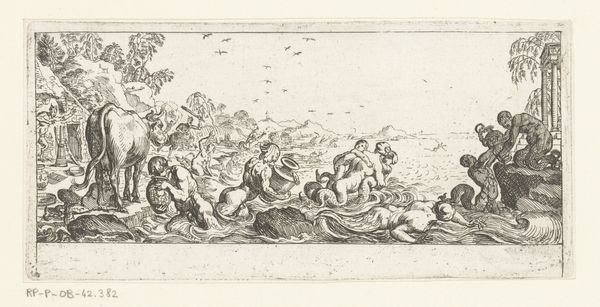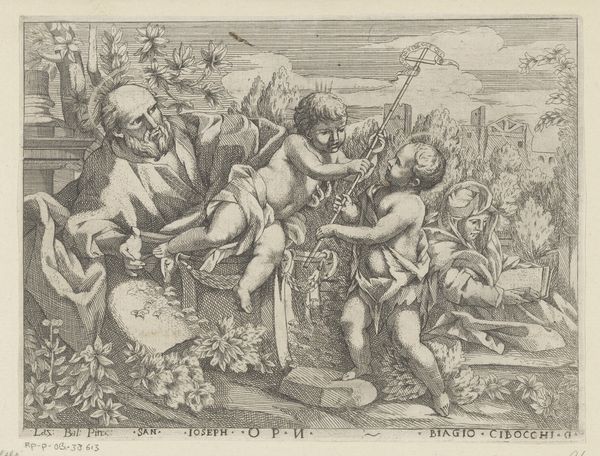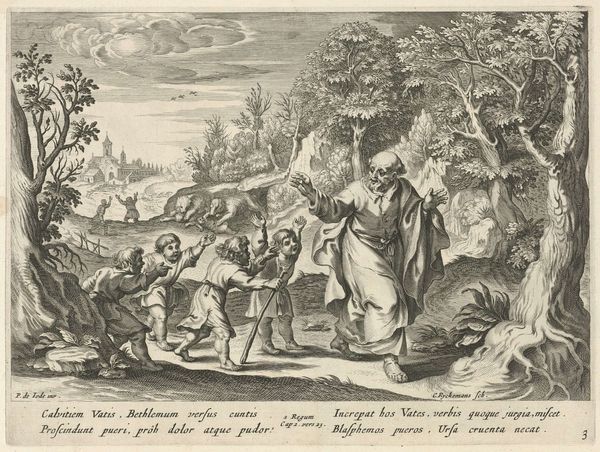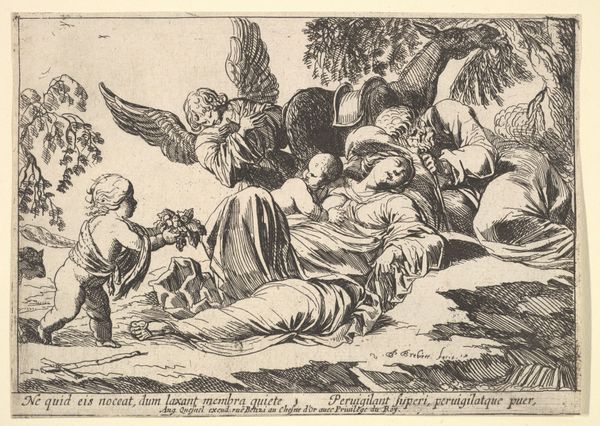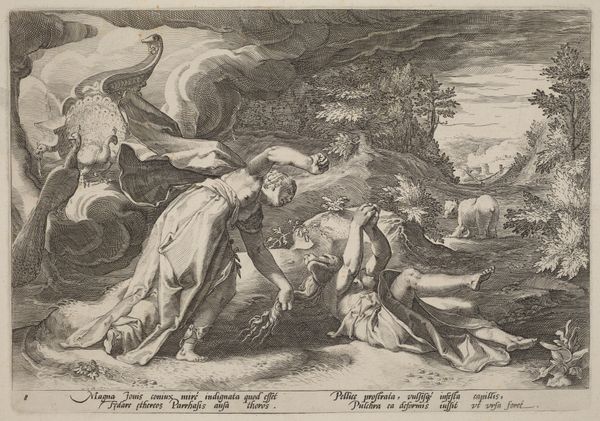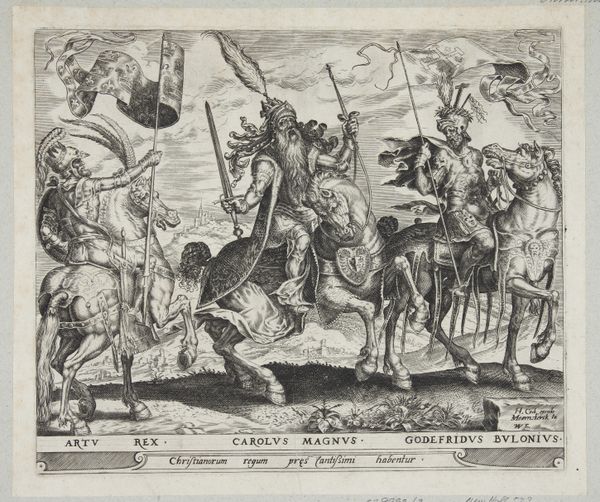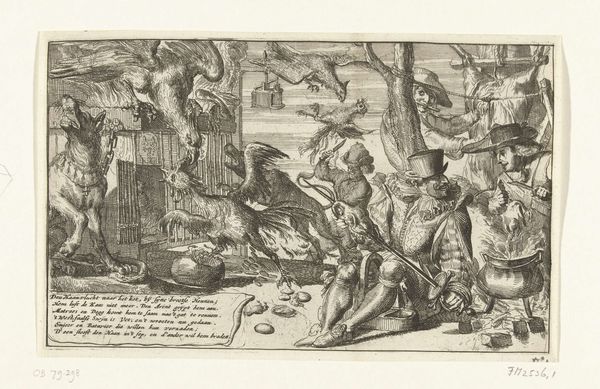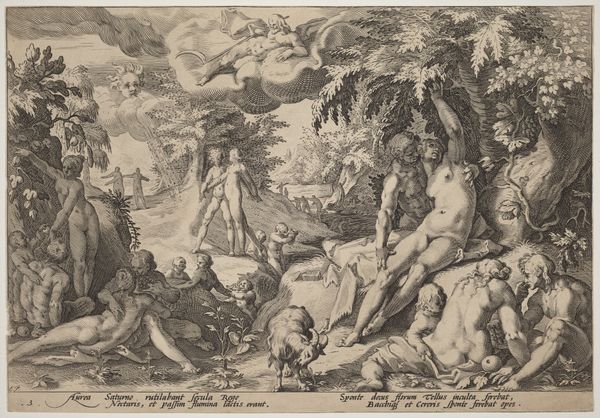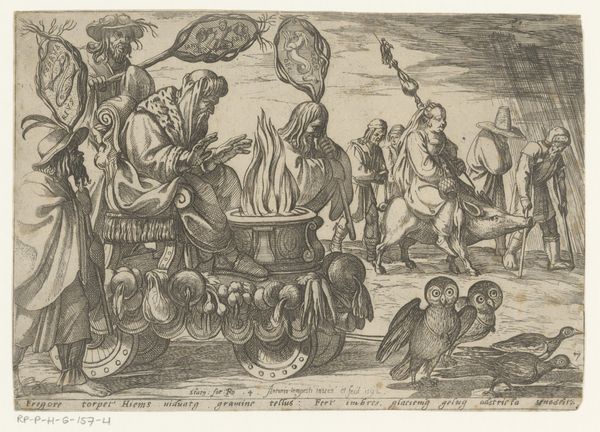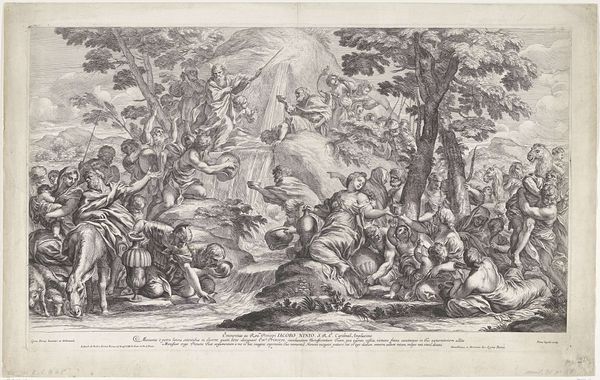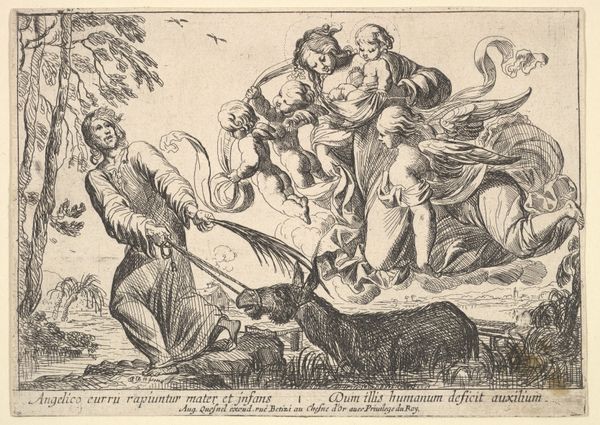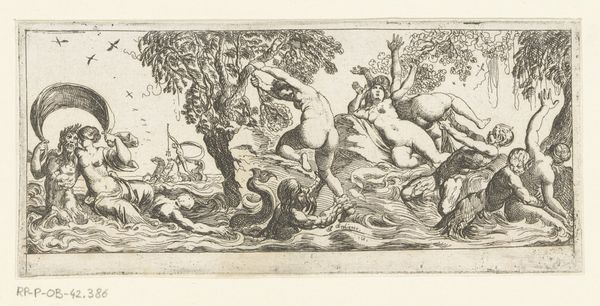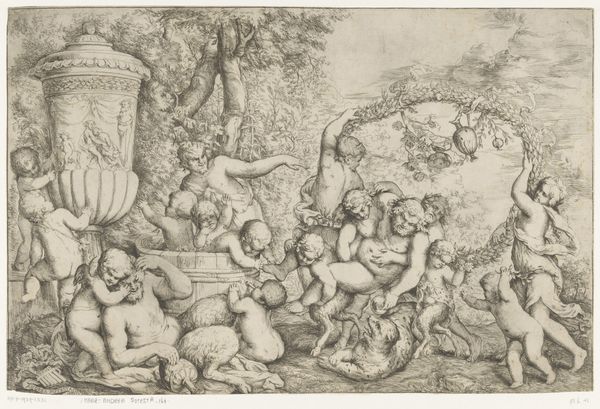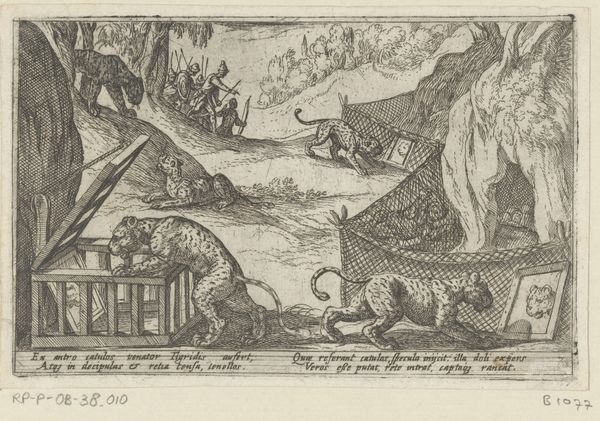
Moses parting the Red Sea as the Pharoah's army drowns, after Raphael's Stanza di Eliodoro, from a series of 15 plates, depicting Raphael's works for the Vatican stanze and the Sistine Chapel tapestries 1650 - 1670
0:00
0:00
drawing, print, engraving
#
drawing
#
narrative-art
#
baroque
# print
#
figuration
#
history-painting
#
engraving
Dimensions: Sheet: 9 3/8 × 13 5/16 in. (23.8 × 33.8 cm) Plate: 4 3/16 × 10 in. (10.7 × 25.4 cm)
Copyright: Public Domain
This print, made by Pietro Santi Bartoli in the 17th century, depicts Moses parting the Red Sea, after Raphael’s fresco in the Vatican. It’s an etching, a printmaking technique that uses acid to cut into a metal plate, which is then inked and pressed onto paper. The material qualities of the print – its delicate lines and tonal gradations – are a direct result of this process. Bartoli would have carefully controlled the depth of the lines by varying the acid’s strength and the duration of the etching. This skilled work allowed him to translate the grandeur of Raphael’s original painting into a more portable, reproducible format. Prints like these played a crucial role in disseminating artistic ideas, functioning almost like a visual internet before photography. They allowed for the mass production of images, connecting artists and audiences across geographical boundaries, and enabling the democratization of art. Ultimately, this print reminds us that art exists not only as a singular masterpiece, but also as a product of craft, labor, and social exchange.
Comments
No comments
Be the first to comment and join the conversation on the ultimate creative platform.
